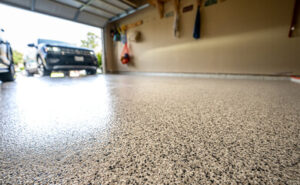Insulation removal might not come to mind very often, but it’s an important part of maintaining a home or commercial building. By removing old insulation and replacing it with newer, more effective materials, you can help ensure better temperature regulation and improved indoor air quality. Click Here to learn more.
Blown-in insulation is tricky to remove, but proper removal can benefit your health and safety, energy efficiency, and home appearance.

Insulation is a critical component of your home. It regulates temperature and prevents cold air from entering your house in the winter and hot air from escaping your home in the summer. However, over time, insulation can lose its effectiveness. In some cases, removing old insulation and replacing it with new materials that can offer better energy efficiency and comfort may be necessary.
Leaving old, degraded, or infested insulation can significantly affect your home’s health and efficiency. For example, mold, mildew, and pest infestations can contaminate the indoor air and lead to respiratory issues and other health problems. Additionally, contaminated insulation can compromise your building’s structural integrity. Furthermore, if your attic or walls aren’t properly sealed, the insulation will be ineffective and you’ll spend more money heating and cooling your home.
Removing old insulation can be a messy job, but a professional insulation removal company can complete the job quickly and efficiently. They can use special equipment to remove batt and blown-in insulation, disposing of it in large contractor bags for safe disposal. They’ll also clean the space to ensure it’s ready for new insulation. In addition, they’ll check for any repairs or renovations that need to be done before the project begins.
Professionals are trained to handle hazardous materials and follow strict safety protocols to ensure that the process is completed safely and without any damage to your home. They’ll be able to identify potential hazards, such as asbestos or vermiculite, and make sure they are safely removed and disposed of before the replacement insulation is installed.
Regardless of the reason for replacing your old insulation, it is worth the investment. Upgrading to a higher R-value will improve your home’s energy efficiency and reduce your energy bills. It will also allow you to seal leaks and other issues that can affect the effectiveness of your insulation. In the long run, it’s a great way to save money and create a comfortable home environment.
It’s a great way to prevent pest infestations.
When pests invade your home, they’re often looking for a safe place to hide and hunker down. Insulation can be the perfect spot for rodents and insects to live and breed, especially if it’s old and contaminated with rodent droppings and insect excrement. These pests can cause serious damage to your home, and if left untreated can lead to health problems for your family.
Thankfully, upgrading your insulation is an effective way to prevent pest infestations. New insulation helps reduce energy costs, improve indoor air quality, and prevent structural damage, making your home safer and healthier for your family. If you’re concerned about the pests in your attic, consider removing the old insulation and replacing it with spray foam, fiberglass batt, or cellulose insulation.
While you can remove your own old attic insulation, it’s a messy job and requires extensive safety precautions. First, you’ll need to take a dust mask and respirator with you so that you don’t inhale the dangerous particles. It’s also important to make sure that you’re prepared for the task ahead of time by gathering a few supplies.
You’ll need a large trash bag to collect the old insulation as you vacuum it up, along with plastic sheets and tape to contain any debris. Ideally, you’ll want someone to help you during this process to ensure that the vacuum is working correctly and doesn’t clog up. A friend can also be helpful for keeping an eye on the progress and assisting with any obstacles that may arise during the process, such as a clog or a difficult-to-reach area.
If you decide to hire a professional insulation contractor, they’ll know how to handle each type of insulation and how to clean it safely. This will allow for a quicker and more efficient removal process, which means that you’ll be able to get your attic back to its original state faster and avoid any potential complications.
Another benefit of hiring a professional insulation remover is that they can provide a variety of additional services to complement your attic insulation removal. They can include rodent proofing and attic cleaning to prevent future infestations, as well as sealing any entry points that pests could use to enter your home in the future. They can also offer a wide variety of energy efficiency upgrades that will improve the overall performance of your home and keep your utility bills low.
It’s a great way to prevent mold growth.
Over time, insulation can become contaminated with dust, mildew, and other pollutants that may compromise indoor air quality. Insulation removal is an effective way to eliminate these contaminants and restore a healthier living environment. Insulation professionals can help homeowners achieve better indoor air quality by removing old and damaged insulation in their attics.
Wet and moldy insulation can pose a significant health risk to home occupants, especially those with respiratory sensitivities. The spores released by mold can trigger allergic reactions in susceptible people, leading to coughing, wheezing, and other symptoms. Moldy insulation can also increase the likelihood of moisture and water damage to walls, ceilings, floors, and other structural components of the home.
Fortunately, preventing and treating moldy insulation can be easy with the right tools and professional services. Mold remediation experts can test and identify the type of mold, which can be helpful in determining the best course of action for treating the moldy insulation. Once the mold is identified, it can be removed from the attic using specialized tools and equipment, which helps prevent the spread of mold spores to other areas of the home.
The professionals can also assess the condition of the attic and the insulation, making sure that it is free from pests, rodent droppings, and nests. This step is essential for preventing contamination beyond the attic and ensures that the new insulation will perform properly in the home. The professionals can then remove the insulation and install the new material.
Removing old insulation is a good opportunity to address any issues with the attic, crawl space, and rim joists. This will improve the performance of the home’s heating, cooling, and ventilation system. It will also reduce energy costs by reducing the amount of heat and cold that escapes the home.
Considering all of the benefits of removing and replacing old insulation, it is a worthwhile investment for any homeowner. Professional insulation removal services can be performed in the attic or other rooms of the house, depending on the needs of the property. In addition to addressing any existing problems, insulation removal can also be a great time to upgrade the material with newer materials that offer improved energy efficiency.
It’s a great way to prevent structural damage.
Insulation helps to keep your home cool in the summer and warm in the winter, and it also contributes to a healthier indoor environment. However, over time, old insulation can become damaged due to a variety of factors such as pest infestation, water damage, and general wear and tear. This can cause it to lose its effectiveness, which can lead to poor energy efficiency and health risks for you and your family. If you notice signs of damaged insulation, it’s important to remove it as soon as possible to prevent further problems.
If you’re thinking about removing your own insulation, it’s essential to prioritize safety and prepare the workspace before beginning the project. This includes ensuring that you have the right equipment, such as a powerful vacuum and heavy-duty bags for disposal. You’ll also want to have a sturdy ladder and access to lighting if you’re working in a dark space. Finally, you’ll need to protect yourself from dust and allergens by wearing a mask or respirator.
It’s typically best to hire professionals for blown-in insulation removal, especially in cases where there’s evidence of rodent activity or mold growth. Additionally, a professional can ensure that the space is sealed properly to prevent contamination of the rest of your home during the removal process.
In addition to preventing moisture and reducing air quality issues, removing old insulation can also help to prevent structural damage. This is because poorly insulated spaces can lead to significant heat loss, which can cause damage to the roof and other areas of your home. It’s important to have your insulation inspected and replaced regularly to avoid these issues.
If you’re ready to improve your home’s energy efficiency and enjoy a healthier indoor environment, contact us today to schedule an inspection and estimate for your insulation removal services! We offer both attic and wall insulation removal to keep your home safe and comfortable all year round. We proudly serve homeowners throughout Northern Virginia and Maryland. Our skilled professionals are trained to provide expert, efficient service and will always prioritize safety and efficiency.

